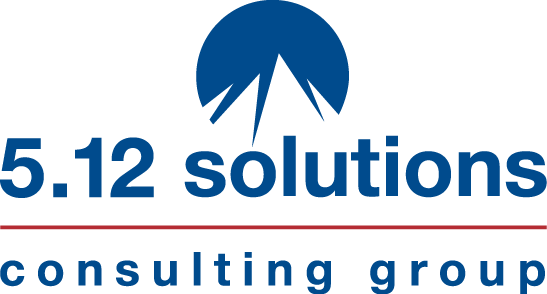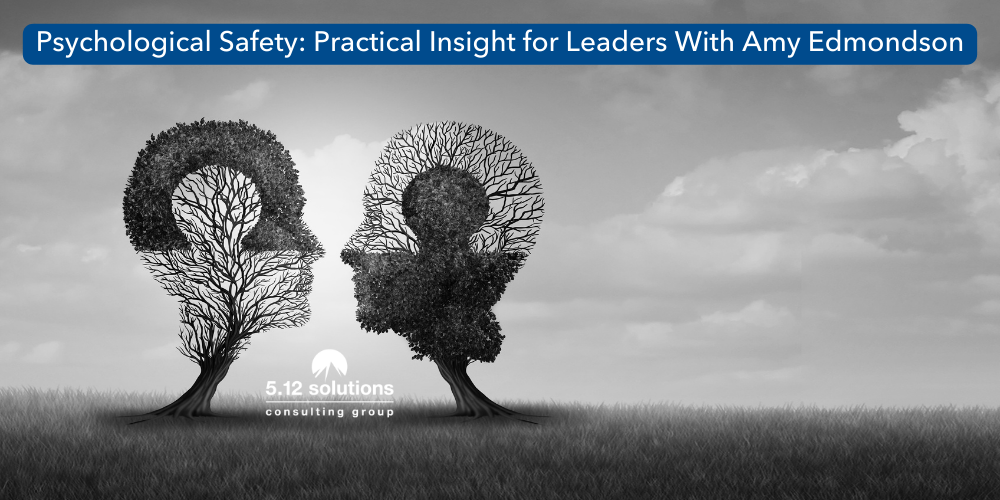Fearless organization.
What does that mean to you?
That was one of many questions I asked during a podcast with Amy Edmondson, the Novartis Professor of Leadership and Management at the Harvard Business School.
Recognized by the Biennial Thinkers50 Global Ranking of Management thinkers since 2011, Amy’s articles have appeared in any number of academic and management outlets, including the Harvard Business Review.
Her book, The Fearless Organization: Creating Psychological Safety in the Workplace for Learning, Innovation, and Growth offers a practical guide for organizations serious about the success in the modern economy.
Enjoy reading these brief highlights of our podcast together, chockful of leadership wisdom.
Fearless Organization ≠ Reckless Organization
Amy asserts that fearless doesn’t equate to reckless: “A fearless organization is a book title, and it is intended to get you curious and to draw you in.” Amy describes the deeper meaning of what a fearless organization really embodies:
- People can bring their full selves to work.
- Everyone feels able to speak up, pose questions, and ask for help.
- Basically: it’s an organization of intense interpersonal candor.
And if you’re a leader reading this right now, you know all too well that’s not always easy for individuals – or the organizations they work for – to build.
Enter: psychological safety.
The Difference Between Trust & Psychological Safety
Amy’s research and thought leadership around the topic of psychological safety is world-renowned.
What exactly does that term mean – and what does it have to do with a “fearless” organization? A lot.
“I really look at psychological safety in groups or teams, in work environments. And it is an emergent
property of a group that describes an interpersonal climate where people feel able to speak up honestly, openly, quickly. It describes the interpersonal climate in a group setting.”
I had a lot of questions for Amy:
- How do you distinguish between trust and psychological safety?
- Is it the same?
- Is one a component of the other?
Amy explained that she sees psychological safety as a blend of…or created by trust and respect. “Trust is technically something that an individual believes about another entity, usually a person.” For example, “I trust you to have my best interest at heart, or I trust you to carry out this assignment without my micromanaging you. I predict that you will do the right thing,” in a sense.
She continues, “From my research and observations, when people trust each other in a group and when they tend to respect each other, psychological safety is more or less automatic in that setting.”
On The Benefits of Psychological Safety
I posed this question to Amy: if we think about an executive team working together – low levels of psychological safety versus high levels – what’s the distinction and what does it enable for teams?
The most important thing it enables for executive teams is good decision making – that they will not fall prey to a very common trap, which is making a consequential decision in a particular direction that one or more people had serious doubts about, but they didn’t feel psychologically safe to speak up about them.
Says Amy, “This isn’t a rare occurrence.” It’s not like this is something that happened “way back when” but never happened again. “No, this happens daily…Or maybe at least weekly in organizations.”
And why is that?
The Subtle Reasons We Don’t Speak Up At Work
Part of the reason, explains Amy, lies just slightly below the level of conscious awareness. “You hold back, as one executive I spoke to described it, because he didn’t want to be the skunk at the picnic.”
Amy brings up an important point: “It’s not that they’re saying, ‘Oh gee, I don’t feel safe-speaking up in this team.’
It’s more like:
…I don’t know, everybody else seems to like it. And who am I?
I don’t want to be unpleasant.
I’m new here.
Maybe this isn’t really my area of expertise.
We can all probably relate to those statements. We have all ways to justify, and it’s not usually a conscious holding back. People will often say, “Hold on here, let me just question this assumption.”
Interpersonal Risk & Vulnerability Associated With Speaking Up
There is also some interpersonal risk involved, a vulnerability to say “I don’t know.” Or to say, “I have a different idea, or I’d like to challenge that idea.”
The challenge then, for many people, is about taking that risk.
Amy reminds us, “Most executives don’t want to think of themselves as scaredy cats, and they’re not, right? This is just a natural, normal social function that we want to look good in front of our peers. I mean, we want people to like and respect us full stop. The old saying, ‘I won’t get this quite right, it’s better to stay silent and leave people in doubt that you’re a fool than to speak up and demonstrate that you’re a fool.’”
Instead, says Amy, we need a saying that says, “So much better to speak up than to hold back.” NOW is the time: Speak up and share that doubt, that idea, or that concern!
Your Voice Matters More Than You May Realize
Why speak up? “Because there might be three other people in the room who have the same doubt,” Amy explains. “We all feel alone with our, hmm, I’m not quite sure thought. But more often than not, we’re not alone.”
But what if you are alone, really? Think of it from this perspective that Amy brings to view: “You might be the hero who prevents us from, let’s say, acquiring another company that would later turn out to be a fiasco.”
I shared a story with Amy I know almost everyone may relate to. It happened when I was working with an executive team. An executive spoke up and said, “I’ve never gotten in trouble for not opening my mouth.”
Just think about that for a minute – how many of us have thought the same thing – or restricted speaking up because we didn’t want to “get into trouble”?
Amy acknowledged that even though we’re not in a command-and-control universe anymore, that statement can still hold true. “And it shouldn’t be true because we’re in the knowledge era,” she reminds us. Amy jokes that there ought to be punishment for not opening your mouth when you had some issue relevant to say.
How Leaders Can Create Psychological Safety
Bringing it all together, Amy has the following recommendations to cultivate an environment of psychological safety within the organization, particularly in our new, post-COVID world of hybrid work models and virtual teams.
Implementing these strategies will be similar to a face-to-face environment but “louder” so to speak – as if you’re “turning up the volume,” as Amy suggests. In other words – the general principles are the same – but you want to amp up a few elements.
Consider how you can integrate some of these strategies in your organization:
- Encourage leaders (and everyone, at every level) to ask lots of questions.
- Acknowledge communication constraints to avoid missing key topics or unintentionally stifling voices from being heard.
- Listen intently to each other – in person or virtually.
- Create structures and norms that engage.
- Make meetings the right length to keep participants involved.
- Slow down to stay focused & eliminate distractions.
- Consider a vote, quick poll or even the chat feature if you’re remote to glean insights.
No one ever said creating a sense of psychological safety would be easy. By incorporating even a few of these simple strategies, you can cultivate a more deeply human workplace, starting today.
For more leadership insights from my chat with Amy Edmondson, listen to the whole podcast here: https://512solutions.com/psychological-safety-podcast/.
Want to learn more about how we can help transform your people into confident and action-oriented leaders? Schedule a complimentary insight session with us here.
Our greatest gift as human beings is our ability to adapt. I believe that the more we can tap into our humanity, the more successful we can be in business and beyond. That’s why I focus so much of my work on giving leaders the roadmap needed to cultivate healthier, more aligned, and deeply human workplaces. I invite you to explore my latest book, where I explore the Six Cs of ‘The Human Workplace Needs Model’.


(1) Comment